Liposuction is for
- those who want to reduce subcutaneous fat
- and make their body more attractive.
What is liposuction?
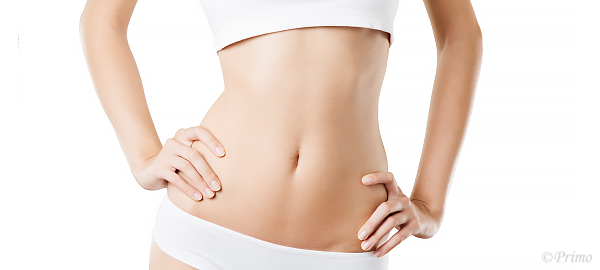
Liposuction is a procedure to reduce flab and contour the body.
Once the excess fat is removed, it usually doesn’t return.
However, some fatty tissue is needed to be attractive. We shouldn’t remove all of it.
The goal is to form a smooth body line by only suctioning out the unwanted flab while leaving the necessary fat intact.
Features of our clinic
- Care is taken to minimize suctioning scars, for example they are hidden in existing wrinkles.
- A thin suction tube is used with either a diameter of 3.0mm, 2.0mm, or 1.6mm depending on the location.
- Safe suction is achieved with the tumescent technique.
- We take time to carefully sculpt the lines of the body.
- For aftercare, high-frequency hyperthermia (CET) is used to reduce swelling and bruising quickly.
We have a new and effective liposuction system that uses a diode laser.
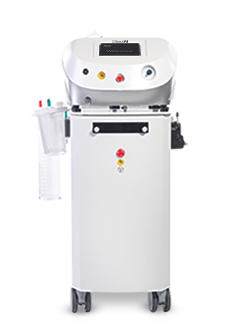
Liposuction procedure
The anesthesia is a combination of epidural and intravenous anesthesia, so the procedure is painless and is completed while the patient is asleep. We can also use a general anesthetic.
The fat is suctioned out through the smallest necessary incision (about 3mm).
A skin protector is used on the incision area to prevent burns from friction.
Before suctioning, a special solution called Tumescent Solution, which is a mixture of saline, local anesthetic and vasoconstrictor, is injected into the local area to make the tissue suitable for suctioning.
A thin suction tube with a diameter of 3.0 mm or less is used.
This allows for a smoother finish without unevenness, and can be done safely without damaging major nerves or blood vessels.
After suctioning, plastic surgical sutures are applied to minimize the scar, and after the sutures are removed, a special skin-colored protective tape is used to camouflage the scar.
The approximate treatment time is about 2 hours for the upper arms, 2 hours for the abdomen, 2 hours for the waist and lower back, 4 hours for the thighs, and 3 hours for the calves.

Area
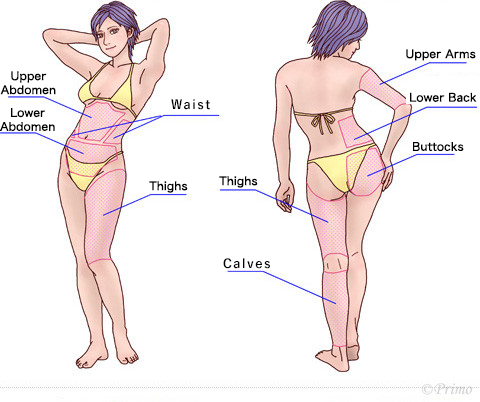
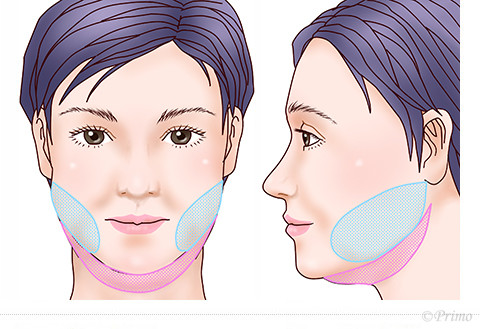
These are typical suction areas.
The suction area will be marked on your body before surgery.
Mini Liposuction
This is a liposuction that can be done on an area as small as the palm of your hand.
This is the recommended method for patients who want to lose volume in a small area.
FAQ
Click on each question to see the answer.
It will subside about two weeks after surgery.
Radiofrequency Hyperthermia (CET) will speed up the recovery.
You may experience muscle pain, but since strong painkillers are used, you will normally be able to go about your daily life from the next day.
The liposuction area can be lightly exercised immediately after the procedure, but we ask that you refrain from strenuous exercise for about two weeks.
Light exercise like walking and stretching will help you get rid of edema.
We use a combination of epidural and intravenous anesthesia, so you won’t feel any pain during the procedure.
General anesthesia may be used if desired.
The liposuction incision will be made along a crease or an inconspicuous area.
At the end of surgery, plastic surgery sutures will be applied, and after they are removed, tape will be applied to clean up the scar and to keep it minimal.
If the procedure is rushed, as done at some clinics, a thick suction tube is used (3.5mm, 4.0mm, etc.) to suction the fat which may cause unevenness or too much muscle coming out.
We use a thin suction tube with a diameter of 3.0 mm or less (3.0 mm, 2.0 mm, 1.6 mm) and take our time carefully suctioning each area so there are no bumps.
Liposuction is not a surgery to remove all the fat; it is a body contouring procedure, which means that the fat necessary for feminine beauty is carefully retained, and only the fat unnecessary for beauty is securely and firmly suctioned out.
The goal of the treatment is to create a body contour that is well defined, and we take our time doing this.
For safety reasons, we do not perform entire body liposuction all in one day.
We take time to carefully sculpt each and every body area (approximate treatment time: 3 hours for calves, 4 hours for thighs, 2 hours for abdomen, 2 hours for lower back, and 2 hours for upper arms).
For optimal health, we don’t suction more than 3,000 cc of body fat in one session.
For example, we can perform liposuction on thighs and calves in one day, or all of the abdomen, lower back, and upper arms in one day.
Fees
All fees include tax.
※ The fees depend on BMI.
| Surgery | Remarks | Fee |
|---|---|---|
| Cheeks | both | ¥275,000 |
| Lower Jaw | ¥220,000 | |
| Cheeks and Lower Jaw | ¥440,000 | |
| Buccal Fat | both sides | ¥330,000 |
| Upper Arms | both | ¥550,000※ |
| Upper Abdomen | ¥330,000※ | |
| Lower Back | ¥330,000※ | |
| Lower Abdomen | ¥440,000※ | |
| Whole Abdomen | ¥715,000※ | |
| Hip Rolls | both | ¥330,000※ |
| Buttocks | ¥440,000※ | |
| Thighs (anterior, posterior, medial, lateral) | 1 section both thighs | ¥440,000※ |
| 2 sections both thighs | ¥550,000※ | |
| 3 sections both thighs | ¥660,000※ | |
| 4 sections both thighs | ¥770,000※ | |
| Whole Thigh | both | ¥770,000※ |
| Lower Leg | both | ¥550,000※ |
| Abdominal Reduction | ¥1,320,000※ |
Post-operative symptoms, risks, side effects, and complications
Below is a list of things that may happen.
In order to prevent these symptoms from occurring, we take measures for each of them and perform treatment with the utmost care.
We have a solution for any symptoms you may experience.
We will do our best to improve your symptoms.
Post-operative symptoms
Swelling and bruising
It will recede in two or three weeks after surgery.
In our clinic, we perform Radiofrequency Hyperthermia (CET) to speed up the fading of swelling and bruising.
Edema
Edema will dissipate in 6 months to a year.
In the meantime, we will instruct you to use elastic stockings, body suits, and supporters for compression.
Post-operative pain
We administer painkillers when necessary.
You can return to your desk job 2 to 3 days after surgery.
If you have a job that requires frequent use of the surgery area, it is safer to have a week off.
Wound redness, swelling
The redness will subside over the course of two to three months.
We apply plastic surgery sutures to make the scars less noticeable.
After the stitches are removed, we advise that special tape is used for 6 months afterwards.
Post-operative itching
Itching may occur during the wound healing process.
Try to keep your skin moisturized.
The symptoms will settle down in a few months.
Risks, side effects, and complications
Lack of skin tightness
As the volume of subcutaneous fat is lost, skin tightness is reduced. Suctioning is performed with care to avoid any pronounced sagging.
Numbness in the suction area
It may appear after surgery.
It will improve over time.
We take into consideration the location of the suction to avoid damaging the main trunk of the sensory nerve.
Infection
Although rare, there is a risk of infection with any surgery.
If infection occurs, it may be necessary to treat it with antibiotics or, if pus has accumulated, to remove the source of infection by small incisional drainage.
Skin unevenness may occur.
This may occur when rough suction is applied with a large suction tube.
In such cases, partial liposuction or fat injection will be used to correct the unevenness.
We use a thin suction tube (less than 3.0 mm in diameter) and take our time to perform liposuction (approximate suction time: upper arms, 2 hours; abdomen, 2 hours; lower back, 2 hours; thighs, 4 hours; lower legs, 3 hours).
The surgery is carefully performed to avoid unevenness.
Left-right asymmetry
If left-right asymmetry occurs, surgical treatment will be required.
We use a thin suction tube and take our time to perform liposuction.
We perform surgery carefully to avoid differences between the left and right sides.
Supervising Doctor
Under the supervision of our plastic surgeons, we operate our website in accordance with medical advertising guidelines.
NORIHIRO OHBA M.D. Ph.D.
HEAD DIRECTOR/DIRECTOR
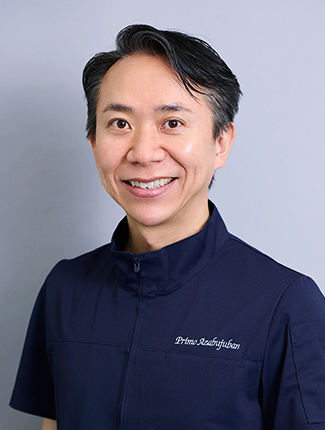
Qualifications and Academic Affiliations
Doctor of Medicine
Board Certified Plastic Surgeon, Japan Society of Plastic and Reconstructive Surgery
Board Certified Aesthetic Plastic Surgeon, Japanese Society of Aesthetic Plastic Surgery
Board Certified Aesthetic Plastic Surgeon, Japanese Society of Aesthetic Surgery
Anesthesiologist certified by the Ministry of Health, Labor and Welfare
Member of International Society of Aesthetic Plastic Surgery (ISAPS)
International Member of American Society of Plastic Surgeons (ASPS)
Member of Japan Society of Cranio-Maxillo Facial Surgery
Member of Japan Society of Laser Surgery and Medicine
Career
Graduated from Osaka City University Faculty of Medicine, 1996
Osaka City University Hospital Plastic and Reconstructive Surgery, 1996-1999
Osaka City University Graduate School of Medicine, 1999-2003
Osaka City University Hospital Plastic and Reconstructive Surgery, 2003-2005
Sano Memorial Hospital Plastic and Reconstructive Surgery, 2003-2005
Daito Central Hospital Plastic and Reconstructive Surgery, 2003-2005
Ritz Cosmetic Surgery Tokyo Clinic, 2005-2008
Primo Azabujuban Clinic, 2009~
Head Director, Primo Medical Corporation, 2011~
Head Director/Director, Primo Azabujuban Clinic, 2020~
